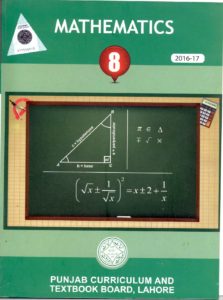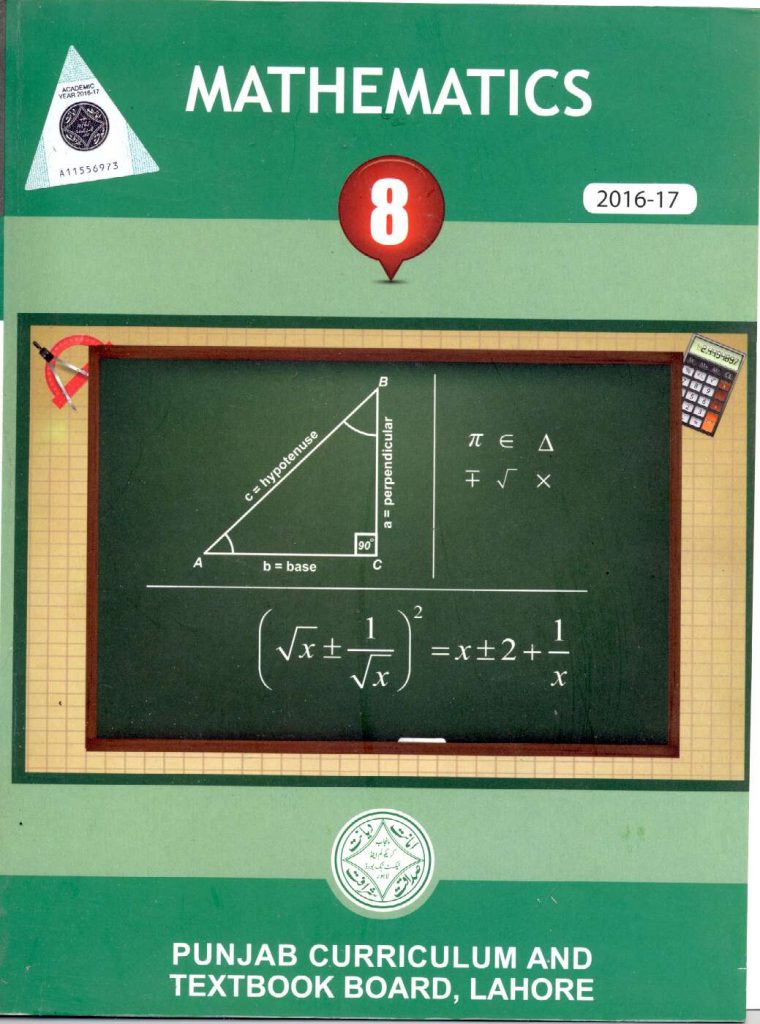
Free download the book Mathematics is for 8th class. This book is by Punjab Curriculum and Textbook Board, Lahore and published by Crustal Note Book, Lahore.
The authors of the book are
- Prof. Muhammad Amin
- Dr. Shafiq-ur-Rehman
- Prof. M. A Saeed
- Muhammad Anwar
- Muhammad Ishfaq Baig
- Muhammad Akhtar Shirani
The 20th Century endured the fashion of the 19th closer to increasing generalization and abstraction in mathematics, wherein the belief of axioms as “self-glaring truths” become in large part discarded in favor of an emphasis on such logical ideas as consistency and completeness.
It also noticed mathematics become a first-rate profession, regarding heaps of new Ph.D.’s every 12 months and jobs in both teaching and industry, and the development of hundreds of specialized areas and fields of observation, together with group idea, knot theory, sheaf idea, topology, graph principle, functional evaluation, singularity concept, disaster idea, chaos idea, model principle, category theory, sport theory, complexity theory and much greater.
The eccentric British mathematician G.H. Hardy and his younger Indian protégé Srinivasa Ramanujan had been just of the incredible mathematicians of the early 20th Century who applied themselves in earnest to solving issues of the preceding century, along with the Riemann speculation.
Even though they came near, they too were defeated with the aid of that most intractable of troubles, however, Hardy is credited with reforming British arithmetic, which had sunk to something of a low ebb at that point, and Ramanujan proved himself to be one of the maximum awesome (if particularly undisciplined and risky) minds of the century.
Others followed strategies relationship again millennia but taken to a 20th Century stage of complexity. In 1904, Johann Gustav Hermes finished his creation of an everyday polygon with sixty-five, 537 facets (216 + 1), using just a compass and directly part as Euclid could have executed, a feat that took him over ten years.
The early twentieth Century additionally saw the beginnings of the upward push of the sphere of mathematical good judgment, building on the earlier advances of Gottlob Frege, which came to fruition inside the arms of Giuseppe Peano, L.E.J. Brouwer, David Hilbert, and, especially, Bertrand Russell and A.N. Whitehead, whose enormous joint paintings the “Principia Mathematics” was so influential in mathematical and philosophical logicism.
The century commenced with a historical convention at the Sorbonne in Paris in the summertime of 1900 which is largely remembered for a lecture by means of the younger German mathematician David Hilbert wherein he set out what he noticed as the 23 greatest unsolved mathematical problems of the day.
Those “Hilbert troubles” successfully set the agenda for 20th Century mathematics, and laid down the gauntlet for generations of mathematicians to come back. Of those authentic 23 troubles, 10 have now been solved, 7 are partly solved, and a pair of (the Riemann hypothesis and the Kronecker-Weber theorem on abelian extensions) are nevertheless open, with the last 4 being too loosely formulated to be said as solved or no longer.
Hilbert turned into himself an incredible mathematician, liable for numerous theorems and a few entirely new mathematical concepts, in addition to overseeing the improvement of what amounted to a whole new style of summary mathematical thinking.
Hilbert’s technique signaled the shift to the current axiomatic method, wherein axioms aren’t taken to be self-obtrusive truths. He became unfailingly optimistic about the future of mathematics, famously asserting in a 1930 radio interview “We should know. We will realize!”, and was a properly-cherished chief of the mathematical community at some stage in the first part of the century.

